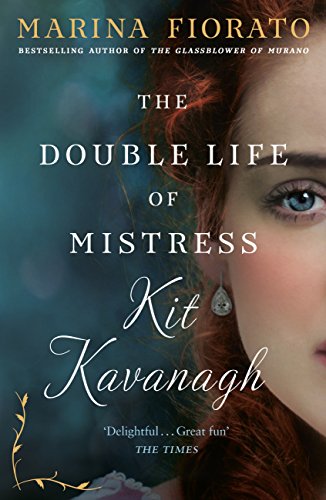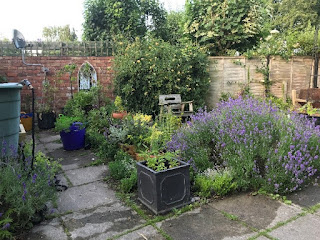Day 28
Kit by Marina Fiorato
aka The Double Life of Mistress Kit Kavanagh
This is the story of Kit Kavanagh, born in Dublin in the late 17th Century. Married young, she and her husband run a tavern in the city. One day her husband doesn’t come home. Kit is distraught. She searches for him and discovers that he has been drinking with soldiers and has taken the Queen’s shilling.
Kit wants him back, so leaving the tavern in the hands of her aunt, she pursues him, enlisting in Marlborough’s army. The book follows her adventures as a soldier and a spy as Marlborough chases the French round Europe. It is very exciting.
But what makes it stand above other books of its type? For a start, to my astonishment, the bones of the story are true. If you are interested you can research her story in Daniel Defoe’s book, Mother Ross: The Life and Adventures of Mrs Christian Davies, Commonly Called Mother Ross, on Campaign with the Duke of Marlborough.
It is very well researched and because Ms Fiorato is an excellent writer, she has absorbed her research into the story seamlessly, so she is not hitting you in the face with chunks of potted history every few pages. Nor does she bury you in the mud and filth of the time, relishing the gore and general disgustingness of the early 18th Century as many historical novelists do. It is all there, but we react to it with the eyes of Kit and her contemporaries, so that when we are faced with the horrors of battle and the squalor of the aftermath a siege, we are able to appreciate the difference and feel the full shock of it, just as Kit would have done.
There is a love story, more than one, in fact. They have a purpose above and beyond being a necessary ingredient of an historical novel, allowing us to consider the nature of love, instead of merely being swept along by the romance.
Does it have a happy ending? Read it and find out.
Music
https://www.youtube.com/watch?v=F3RqXR0WP4o&list=OLAK5uy_nJwnlrezT5eJg2c_V61YtsDL4zEp7_tWs&index=4
This is a song from the other end of the 18th Century, written by Haydn for a series of concerts run by the Earl of Abingdon who was a fascinating character.
You can read all about him here:
Food
More ways to cook vegetables fresh from the garden.
I use this as a base for serving seabass, chicken or pork fillets.
Preheat the oven to 160°C (fan)
1 large onion, thinly sliced in semi-circles
Any combination of:
Courgettes, sliced thinly
Precooked new potatoes, sliced thinly
Carrot sliced thinly
Green beans, sliced
Broad beans,
Peas
Butter
A good wine vinegar like Kressi
Method
Melt the butter in a large frying pan
How much butter? The more you use the lusher it will be.
Turn the heat down and simmer the onions in the butter until they are translucent and golden.
Add the rest of the vegetables and simmer for a further 5-7 minutes.
Transfer to an oven proof dish and sprinkle a scant teaspoon of vinegar over the vegetables.
Pork, chicken or other meat
Heat the pan until very hot. (Add a little oil if necessary)
Sear the meat on both sides to seal in the juice.
Place meat on the vegetables and cook for 20 minutes until cooked.
Check every now and then to check the vegetables aren’t burning. Stir if necessary.
Season with salt and black pepper and serve.
Seabass
(Use fillets for this dish)
Place the dish in the oven while you cook the fish.
Heat the frying pan until it is very hot, add oil or butter if necessary.
Cook the fish skin side down for 2 minutes.
Flip and cook the other side for 1 - 2 minutes.
If the fish is fresh, or fully defrosted, it should not need more.
Remove the dish from the oven and carefully place the fish on the vegetables.
Season with salt and black pepper and serve with an ice cold Chablis.
Today’s painting
The Shrimp Girl by William Hogarth painted between 1740 – 45
This is a very interesting painting for a number of reasons. The 18th Century is known for its formal portraiture – think Gainsborough, Romney, Reynolds, Lawrence – and Hogarth, although he did paint portraits is more known for his narrative paintings like Marriage à la Mode and the Rake’s Progress or his cartoons like Gin Lane.
Hogarth painted this quite late in his career. It is an informal, unposed picture of an ordinary girl, probably a fishmonger’s daughter, selling shellfish on the streets of London.
The painting has posed a lot of questions.
Firstly its style has nothing of the polished ‘finished’ look of most 18th Century portraits. The brushwork almost points the way to Impressionism, as does its look of spontaneity – was it painted en plein air rather than in Hogarth’s studio?
People have suggested, since it was still in Hogarth’s studio when he died, that it was an unfinished preparatory sketch for a larger more formal portrait that was never painted, but it is much larger than most preparatory sketches (25 inches by 27 inches) and who would have commissioned it?
I don’t think the whys and the wherefores really matter. It remains a vivid glimpse of a real living, breathing girl from an age stifled by formality. I love it.







Comments
Post a Comment